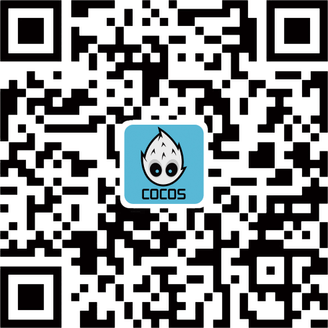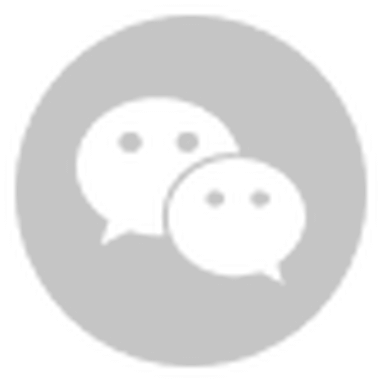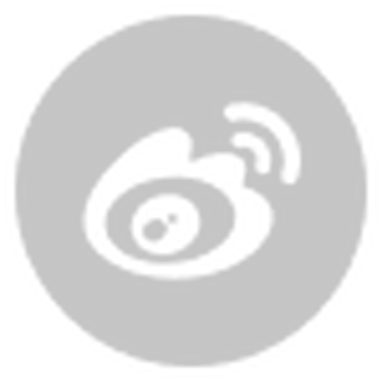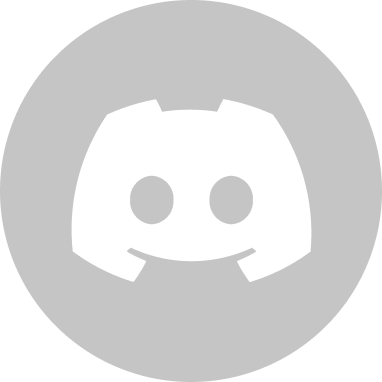前言
朋友们,欢迎回来!今天,我们将要征服Cocos2d里面的精灵。这个过程并不会像你想像中那么难,接下来的教程,我就会证明给你看。首先,我们有N种方法在屏幕上显示一张图片。。。其实,我们在《Cocos2d-x 菜单教程:第三部分》就已经知道一种显示图片的方式了。 那么,我们今天将学习哪些内容呢?我们将学习有关 “Sprite”, “SpriteSheets”, “SpriteFrame”,以及“Texture2d” 和 “TextureCache”的一切!在这篇教程的最后,我们将有一条龙在一个简单的背景地形上面飞,路径由用户的手指滑动touch决定。很酷吧? 这里有本教程的完整源代码 在这个教程中,我们还是学习一些基础知识--不过没有菜单啦,我们主要关心的是精灵(sprite)。先看一看整个教程最后的产品是什么样子吧!如下图所示:#pragma once
#include "cocos2d.h"
#include "PlayLayer.h"
USING_NS_CC;
class SceneManager: public Object
{
public:
static void goPlay();
static void go(Layer* layer);
static Scene* wrap(Layer* layer);
};
#include "SceneManager.h"
void SceneManager::goPlay()
{
auto layer = PlayLayer::create();
SceneManager::go(layer);
}
void SceneManager::go(Layer* layer)
{
auto director = Director::getInstance();
auto newScene = SceneManager::wrap(layer);
if (director->getRunningScene())
{
director->replaceScene(newScene);
}
else
{
director->runWithScene(newScene);
}
}
Scene* SceneManager::wrap(Layer* layer)
{
auto newScene = Scene::create();
newScene->addChild(layer);
return newScene;
}
#pragma once
#include "cocos2d.h"
#include "SceneManager.h"
USING_NS_CC;
class PlayLayer: public Layer
{
public:
Vector<Action*>* flyActionArray;
Sprite* dargon;
Action* flyAction;
Action* moveAction;
bool moving;
CREATE_FUNC(PlayLayer);
bool virtual init();
};
#include "PlayLayer.h"
enum {ktagSpriteSheet = 1,};
bool PlayLayer::init()
{
if (!Layer::init())
{
return false;
}
auto background = Sprite::create("Terrain.png");
background->setPosition(ccp(160,240));
this->addChild(background);
auto texture = TextureCache::getInstance()->addImage("dragon.png");
auto sheet = SpriteBatchNode::create("dragon.png",10);
this->addChild(sheet, 0, ktagSpriteSheet);
Size s = Director::getInstance()->getWinSize();
Vector<SpriteFrame*> animFrames;
for (int i = 0; i < 8; i++)
{
animFrames.clear();
for (int j = 0; j < 10; j++)
{
auto frame = SpriteFrame::createWithTexture(texture, Rect(j * 75, i * 70, 75, 70), false, Director::getInstance()->getVisibleOrigin(), Size(75, 70));
animFrames.pushBack(frame);
}
auto animation = Animation::createWithSpriteFrames(animFrames, 0.1f);
auto animate = Animate::create(animation);
auto seq = Sequence::create(animate, NULL);
this->flyAction = RepeatForever::create(seq);
flyActionArray->pushBack(this->flyAction);
}
auto frame1 = SpriteFrame::createWithTexture(texture, Rect(0, 0, 75, 70), false, Director::getInstance()->getVisibleOrigin(), Size(75, 70));
this->dargon = Sprite::createWithSpriteFrame(frame1);
dargon->setPosition(ccp(s.width/2-80,s.height/2));
sheet->addChild(dargon);
this->flyAction = flyActionArray->at(0);
dargon->runAction(flyAction);
return true;
}
auto background = Sprite::create("Terrain.png");
background->setPosition(ccp(160,240));
this->addChild(background);
background->setAnchorPoint(cpp(0.5,0.5));
background->setAnchorPoint(cpp(0.0,0.0));
auto texture = TextureCache::getInstance()->addImage("dragon.png");
auto sheet = SpriteBatchNode::create("dragon.png",10);
this->addChild(sheet, 0, ktagSpriteSheet);
Vector<SpriteFrame*> animFrames;
for (int i = 0; i < 8; i++)
{
animFrames.clear();
for (int j = 0; j < 10; j++)
{
auto frame = SpriteFrame::createWithTexture(texture, Rect(j * 75, i * 70, 75, 70), false, Director::getInstance()->getVisibleOrigin(), Size(75, 70));
animFrames.pushBack(frame);
}
auto animation = Animation::createWithSpriteFrames(animFrames, 0.1f);
auto animate = Animate::create(animation);
auto seq = Sequence::create(animate, NULL);
this->flyAction = RepeatForever::create(seq);
flyActionArray->pushBack(this->flyAction);
}
auto frame1 = SpriteFrame::createWithTexture(texture, Rect(0, 0, 75, 70), false, Director::getInstance()->getVisibleOrigin(), Size(75, 70));
this->dargon = Sprite::createWithSpriteFrame(frame1);
dargon->setPosition(ccp(s.width/2-80,s.height/2));
sheet->addChild(dargon);
this->flyAction = flyActionArray->at(0);
dargon->runAction(flyAction);
后记:这里使用的方法,说实话,真的过时了。:)不过我们了解了也是有好处的。之前翻译的ray的教程里面,都是使用texturePacker生成pvr.ccz和plist文件来处理的。获得动画帧也很简单,直接spriteFrameByName就可以了。 原文链接地址:http://www.iphonegametutorials.com/2010/09/10/cocos2d-sprite-tutorial/ 上一篇教程中,我们留下了我们孤独的dragon在屏幕中间。。。然而,90%的动画并没有应用到,那可是我们花了很大力气才建立好的呀!太遗憾了!所以,我们这篇教程要弥补这个缺憾。我们将添加touch控制,以此来捕获用户的输入,并根据用户手指的方向来选择一个合适的动画给dragon播放。你就可以用手在屏幕上滑动来指挥dragon移动了。 这里有本教程的完整源代码。 这里介绍一下Cocos2d-x 3.0新的触摸机制: 首先我们需要让layer能接收touch事件。Cocos2d-x 3.0增加了新的事件分发机制,并且让setTouchEnabled为deprecated的方法。对某个方法和类标注deprecated的意思就是这个方法或类不再建议使用。所以我们继承虚函数onEnter,并重写:
void PlayLayer::onEnter()
{
Layer::onEnter();
auto listener = EventListenerTouchOneByOne::create();
listener->setSwallowTouches(true);
listener->onTouchBegan = CC_CALLBACK_2(PlayLayer::onTouchBegan, this);
listener->onTouchMoved = CC_CALLBACK_2(PlayLayer::onTouchMoved, this);
listener->onTouchEnded = CC_CALLBACK_2(PlayLayer::onTouchEnded, this);
auto dispatcher = Director::getInstance()->getEventDispatcher();
dispatcher->addEventListenerWithSceneGraphPriority(listener, this);
listener->onTouchBegan = CC_CALLBACK_2(PlayLayer::onTouchBegan, this);
listener->onTouchMoved = CC_CALLBACK_2(PlayLayer::onTouchMoved, this);
listener->onTouchEnded = CC_CALLBACK_2(PlayLayer::onTouchEnded, this);
Point moveVector = touchLocation - dragon->getPosition();
float distanceToMove = ccpLength(moveVector);
float moveAngle = ccpToAngle(moveVector);
float cocosAngle = CC_RADIANS_TO_DEGREES(-1 * moveAngle);
float dragonVelocity = 480.0 / 3.0;
float moveDuration = distanceToMove / dragonVelocity;
cocosAngle += 23;
if (cocosAngle < 0)
{
cocosAngle += 360;
}
int runAnim = (int)((cocosAngle)/45);
- 计算touch点到dragon当前位置的向量
- 计算这个向量的长度(这里是像素长度)
- 计算move向量的弧度
- 把弧度转换成角度(因为Cocos2d-x使用的是角度)
dragon->stopAction(flyAction);
this->flyAction = flyActionArray.at(runAnim);
dragon->runAction(flyAction);
this->moveAction = Sequence::create(MoveTo::create(moveDuration,touchLocation),NULL);
dragon->runAction(moveAction);
#include "cocos2d.h"
USING_NS_CC;
class Adventurer: public Node {
Sprite* charSprite;
Action* walkAction;
Action* moveAction;
bool moving;
};
#include "Adventurer.h"
bool Adventurer::init()
{
if (!Node::init())
{
return false;
}
return true;
}
#pragma once
#include "cocos2d.h"
#include "SceneManager.h"
USING_NS_CC;
class PlayLayer: public Layer
{
public:
Vector<Action*> flyActionArray;
Texture2D* texture;
SpriteBatchNode* spritesheet;
Vector<char*> charArray;
Sprite* dragon;
Action* flyAction;
Action* moveAction;
bool moving;
CREATE_FUNC(PlayLayer);
bool virtual init();
void virtual onEnter();
bool onTouchBegan(Touch *touch, Event *event);
void onTouchMoved(Touch *touch, Event *event);
void onTouchEnded(Touch* touch, Event* event);
};
#include "PlayLayer.h"
enum {ktagSpriteSheet = 1,};
bool PlayLayer::init()
{
if (!Layer::init())
{
return false;
}
auto background = Sprite::create("Terrain.png");
background->setPosition(ccp(160,240));
this->addChild(background);
auto texture = TextureCache::getInstance()->addImage("dragon.png");
auto sheet = SpriteBatchNode::create("dragon.png",10);
this->addChild(sheet, 0, ktagSpriteSheet);
Size s = Director::getInstance()->getWinSize();
Vector<SpriteFrame*> animFrames;
for (int i = 0; i < 8; i++)
{
animFrames.clear();
for (int j = 0; j < 10; j++)
{
auto frame = SpriteFrame::createWithTexture(texture, Rect(j * 75, i * 70, 75, 70), false, Director::getInstance()->getVisibleOrigin(), Size(75, 70));
animFrames.pushBack(frame);
}
auto animation = Animation::createWithSpriteFrames(animFrames, 0.1f);
auto animate = Animate::create(animation);
auto seq = Sequence::create(animate, NULL);
this->flyAction = RepeatForever::create(seq);
flyActionArray.pushBack(this->flyAction);
}
auto frame1 = SpriteFrame::createWithTexture(texture, Rect(0, 0, 75, 70), false, Director::getInstance()->getVisibleOrigin(), Size(75, 70));
this->dragon = Sprite::createWithSpriteFrame(frame1);
dragon->setPosition(ccp(s.width/2-80,s.height/2));
sheet->addChild(dragon);
this->flyAction = flyActionArray.at(0);
dragon->runAction(flyAction);
texture = TextureCache::getInstance()->addImage("adventurer.png");
spriteSheet = SpriteBatchNode::createWithTexture(texture,100);
this->addChild(spriteSheet,0,ktagSpriteSheet);
this->schedule(schedule_selector(PlayLayer::gameLogic), 1.0f);
return true;
}
void PlayLayer::addAdventurer()
{
Vector<SpriteFrame*>animFrames;
animFrames.clear();
for (int i = 0; i < 9; i++)
{
auto *frame = SpriteFrame::createWithTexture(this->texture, Rect(i * 16, 0, 16, 29));
animFrames.pushBack(frame);
}
auto adventurer = Adventurer::create();
if (adventurer != NULL) {
auto *frame1 = SpriteFrame::createWithTexture(this->texture, Rect(0, 0, 19, 29));
adventurer->charSprite = Sprite::createWithSpriteFrame(frame1);
Size s = Director::getInstance()->getWinSize();
int minY = adventurer->charSprite->getContentSize().width/2;
int maxY = s.height - adventurer->charSprite->getContentSize().height / 2;
int rangeY = maxY - minY;
int actualY = (CCRANDOM_0_1() * rangeY) + minY;
int minX = -300;
int maxX = 0;
int rangeX = maxX - minX;
int actualX = (CCRANDOM_0_1() * rangeX) + minX;
adventurer->charSprite->setPosition(ccp(actualX, actualY));
auto *animation = Animation::createWithSpriteFrames(animFrames,0.2);
auto *animate = Animate::create(animation);
auto *seq = Sequence::create(animate,NULL);
adventurer->walkAction = RepeatForever::create(seq);
auto actionMove = MoveTo::create(10.0f,ccp(s.width + 200, actualY));
auto actionMoveDone = CallFuncN::create(CC_CALLBACK_1(PlayLayer::spriteMoveFinished,this,(void*)adventurer));
adventurer->moveAction = Sequence::create(actionMove,actionMoveDone,NULL);
adventurer->charSprite->runAction(adventurer->walkAction);
adventurer->charSprite->runAction(adventurer->moveAction);
this->addChild(adventurer->charSprite)
charArray.pushBack(adventurer);
}
}
void PlayLayer::spriteMoveFinished(Node* sender, void* adv)
{
auto adventurer = (Adventurer*)adv;
Size s = Director::getInstance()->getWinSize();
int minY = adventurer->charSprite->getContentSize().height / 2;
int maxY = s.height - adventurer->charSprite->getContentSize().height / 2;
int rangeY = maxY - minY;
int actualY = (CCRANDOM_0_1() * rangeY) + minY;
int minX = -300;
int maxX = 0;
int rangeX = maxX - minX;
int actualX = (CCRANDOM_0_1() * rangeX) + minX;
adventurer->charSprite->setPosition(ccp(actualX, actualY));
adventurer->stopAction(adventurer->moveAction);
adventurer->charSprite->runAction(adventurer->moveAction);
}
void PlayLayer::gameLogic(float dt)
{
this->addAdventurer();
}
void PlayLayer::onEnter()
{
Layer::onEnter();
auto listener = EventListenerTouchOneByOne::create();
listener->setSwallowTouches(true);
listener->onTouchBegan = CC_CALLBACK_2(PlayLayer::onTouchBegan, this);
listener->onTouchMoved = CC_CALLBACK_2(PlayLayer::onTouchMoved, this);
listener->onTouchEnded = CC_CALLBACK_2(PlayLayer::onTouchEnded, this);
auto dispatcher = Director::getInstance()->getEventDispatcher();
dispatcher->addEventListenerWithSceneGraphPriority(listener, this);
}
void PlayLayer::onTouchEnded(Touch* touch,Event* event)
{
Point touchLocation = this->convertToWorldSpace(this->convertTouchToNodeSpace(touch));
Point moveVector = touchLocation - dragon->getPosition();
float distanceToMove = ccpLength(moveVector);
float moveAngle = ccpToAngle(moveVector);
float cocosAngle = CC_RADIANS_TO_DEGREES(-1 * moveAngle);
float dragonVelocity = 480.0 / 3.0;
float moveDuration = distanceToMove / dragonVelocity;
cocosAngle += 23;
if (cocosAngle < 0)
{
cocosAngle += 360;
}
int runAnim = (int)((cocosAngle)/45);
dragon->stopAction(flyAction);
this->flyAction = flyActionArray.at(runAnim);
dragon->runAction(flyAction);
this->moveAction = Sequence::create(MoveTo::create(moveDuration,touchLocation),NULL);
dragon->runAction(moveAction);
}
bool PlayLayer::init()
{
if (!Layer::init())
{
return false;
}
auto background = Sprite::create("Terrain.png");
background->setPosition(ccp(160,240));
this->addChild(background);
auto texture = TextureCache::getInstance()->addImage("dragon.png");
auto sheet = SpriteBatchNode::create("dragon.png",10);
this->addChild(sheet, 0, ktagSpriteSheet);
Size s = Director::getInstance()->getWinSize();
Vector<SpriteFrame*> animFrames;
for (int i = 0; i < 8; i++)
{
animFrames.clear();
for (int j = 0; j < 10; j++)
{
auto frame = SpriteFrame::createWithTexture(texture, Rect(j * 75, i * 70, 75, 70), false, Director::getInstance()->getVisibleOrigin(), Size(75, 70));
animFrames.pushBack(frame);
}
auto animation = Animation::createWithSpriteFrames(animFrames, 0.1f);
auto animate = Animate::create(animation);
auto seq = Sequence::create(animate, NULL);
this->flyAction = RepeatForever::create(seq);
flyActionArray.pushBack(this->flyAction);
}
auto frame1 = SpriteFrame::createWithTexture(texture, Rect(0, 0, 75, 70), false, Director::getInstance()->getVisibleOrigin(), Size(75, 70));
this->dragon = Sprite::createWithSpriteFrame(frame1);
dragon->setPosition(ccp(s.width/2-80,s.height/2));
sheet->addChild(dragon);
this->flyAction = flyActionArray.at(0);
dragon->runAction(flyAction);
texture = TextureCache::getInstance()->addImage("adventurer.png");
spriteSheet = SpriteBatchNode::createWithTexture(texture,100);
this->addChild(spriteSheet,0,ktagSpriteSheet);
this->schedule(schedule_selector(PlayLayer::gameLogic), 1.0f);
return true;
}
void PlayLayer::gameLogic(float dt)
{
this->addAdventurer();
}
void PlayLayer::addAdventurer()
{
Vector<SpriteFrame*>animFrames;
animFrames.clear();
for (int i = 0; i < 9; i++)
{
auto *frame = SpriteFrame::createWithTexture(this->texture, Rect(i * 16, 0, 16, 29));
animFrames.pushBack(frame);
}
auto adventurer = Adventurer::create();
if (adventurer != NULL)
{
auto *frame1 = SpriteFrame::createWithTexture(this->texture, Rect(0, 0, 19, 29));
adventurer->charSprite = Sprite::createWithSpriteFrame(frame1);
Size s = Director::getInstance()->getWinSize();
int minY = adventurer->charSprite->getContentSize().width/2;
int maxY = s.height - adventurer->charSprite->getContentSize().height / 2;
int rangeY = maxY - minY;
int actualY = (CCRANDOM_0_1() * rangeY) + minY;
int minX = -300;
int maxX = 0;
int rangeX = maxX - minX;
int actualX = (CCRANDOM_0_1() * rangeX) + minX;
adventurer->charSprite->setPosition(ccp(actualX, actualY));
auto *animation = Animation::createWithSpriteFrames(animFrames,0.2);
auto *animate = Animate::create(animation);
auto *seq = Sequence::create(animate,NULL);
adventurer->walkAction = RepeatForever::create(seq);
auto actionMove = MoveTo::create(10.0f,ccp(s.width + 200, actualY));
auto actionMoveDone = CallFuncN::create(CC_CALLBACK_1(PlayLayer::spriteMoveFinished,this,(void*)adventurer));
adventurer->moveAction = Sequence::create(actionMove,actionMoveDone,NULL);
adventurer->charSprite->runAction(adventurer->walkAction);
adventurer->charSprite->runAction(adventurer->moveAction);
this->addChild(adventurer->charSprite);
charArray.pushBack(adventurer);
}
}
如果你不想让任何参数传递的话,就使用CCCallFunc函数。
现在,我们还剩下一件事情没有涉及了,就是之前CCMove结束的时候,通过CCCallFuncND指定的回调函数,如下所示:void PlayLayer::spriteMoveFinished(Node* sender, void* adv)
{
auto adventurer = (Adventurer*)adv;
Size s = Director::getInstance()->getWinSize();
int minY = adventurer->charSprite->getContentSize().height / 2;
int maxY = s.height - adventurer->charSprite->getContentSize().height / 2;
int rangeY = maxY - minY;
int actualY = (CCRANDOM_0_1() * rangeY) + minY;
int minX = -300;
int maxX = 0;
int rangeX = maxX - minX;
int actualX = (CCRANDOM_0_1() * rangeX) + minX;
adventurer->charSprite->setPosition(ccp(actualX, actualY));
adventurer->stopAction(adventurer->moveAction);
adventurer->charSprite->runAction(adventurer->moveAction);
}

